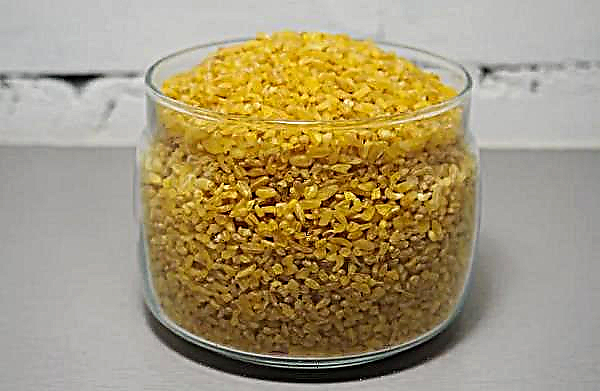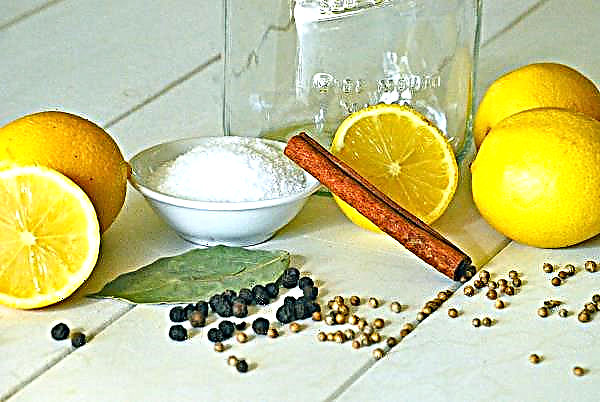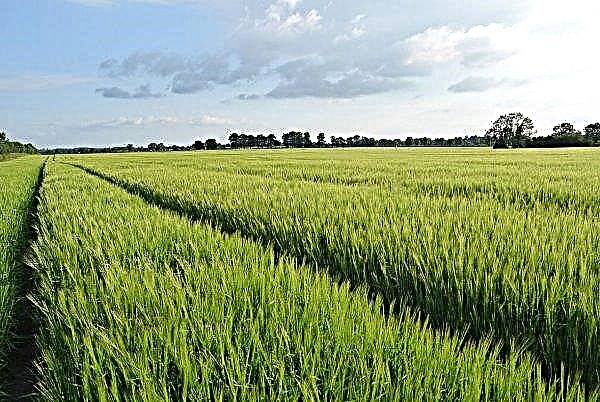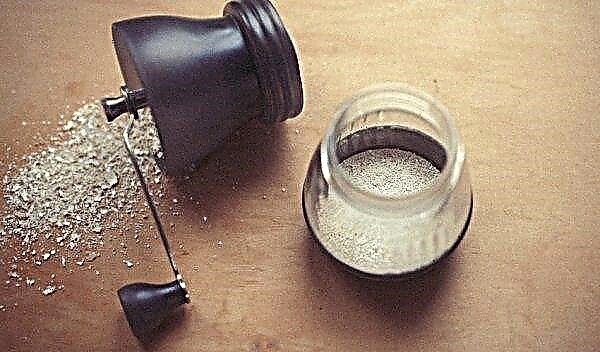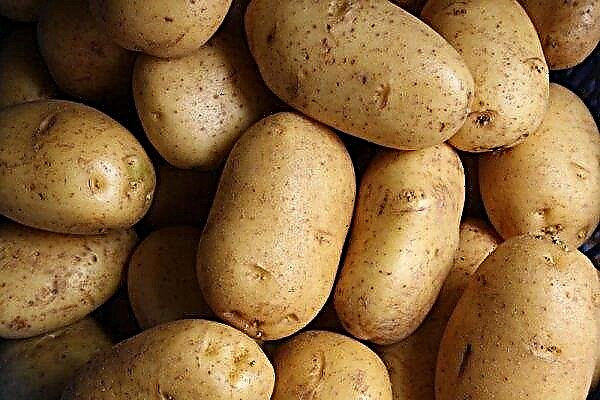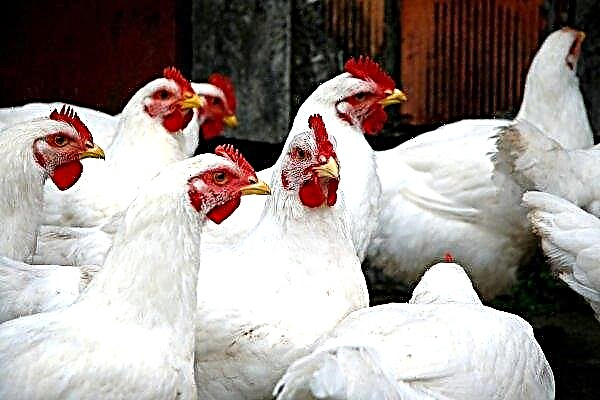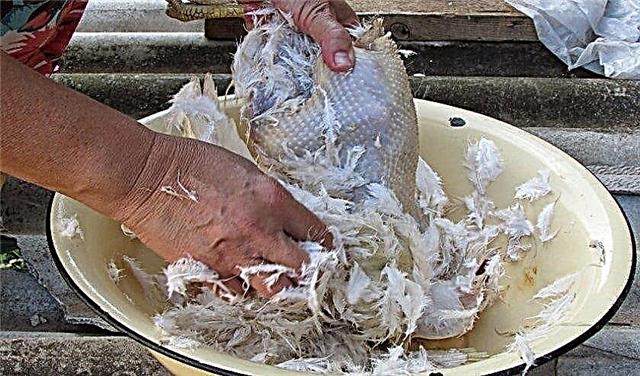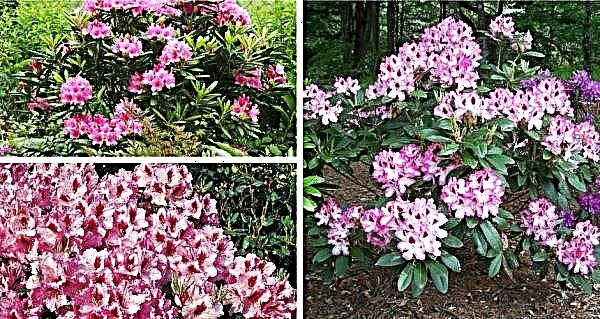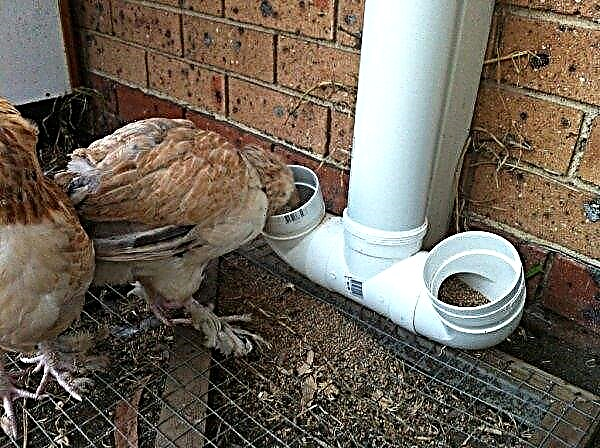Juniper Nana variety is small in size. It is so compact that it is located even on small plots of land, so gardeners grow this variety in flowerbeds, personal plots, parks, and are used in a variety of design compositions. Detailed plant care, planting rules, possible diseases and pests are described in this article.
Botanical Description
The dwarf representative of the cypress family is the creeping juniper cultivar Nana (lat. Juniperus procumbens Nana). It spread from the United States of America, where it was withdrawn back in 1922. It is represented by small bushes that spread along the ground. Its needles are rather stiff, dense, branches grow horizontally, shoots at the ends are arranged vertically.
Did you know? Juniper creeping - a real long-liver. In nature, representatives of this species can live more than 3000 years.
This plant is dioecious, having both male cones (on the shoot ends) and female (on other parts of the branches). This variety is slowly growing and unpretentious to care for. Unlike other junipers, it feels perfect in the sun, although it can grow quite well in partial shade. Prefers fresh, not very fertilized, with good soil drainage. It tolerates winter cold and summer heat, quickly adapts to environmental conditions.
Grade characteristics
Juniper Nana has the following characteristics:
- the bush is low, creeping, reaching a height of only about 40 cm even in adulthood, and the diameter of its crown is not more than 1.5 m;
- the crown is pillow-shaped, dense and stiff; branches sometimes take root;
- stiff short shoots, rising at the ends up;
- tightly adjacent to each other, whorled, bluish-green needles are covered with a wax coating with a green streak in the middle;
- grows up to 15 cm in width per year;
- tolerates frosty and snowy winters, resistant to winds;
- grows well on rocky surfaces, sandy loamy soils;
- does not tolerate excess fertilizer, with it it can simply die;
- suffers from both insufficient and excessive moisture;
- during especially snowy winters it is advisable to protect from snow embankments;
- does not tolerate stagnation of moisture;
- It is part of various landscape compositions of stone, planted on the slopes, used as a cover for the soil.
Landing
The juniper variety in question does not have special requirements for planting procedures. The only exception is that between the planted bushes you must leave a distance of 1.5 m to 2 m. This plant grows especially strongly in width, so there should be free space for growth on all sides.
Video: Juniper planting
Preparation of a seedling and a landing site
In order for the plant to take root perfectly, you need to carefully consider the choice of planting material. It is preferable to plant the purchased juniper from the container, it takes root better.
Seedlings should be:
- green, do not take seed with browned or yellowed needles;
- with elastic roots completely filling the tank with soil;
- with fresh, undamaged branches;
- visually healthy, without signs of pests or any kind of disease, damage.
Carefully choose a place to land: it should be in the sun or in partial shade, well ventilated. The exposure of the sun to the plant favors its growth. Earth requires light, well-moistened. If the soil is very moist and loamy, drainage of broken brick and sand is recommended. You can use complex mineral fertilizer to enrich the soil with nutrients.
Landing rules
As with other forms of juniper, planting a variety of Nana involves several stages:
- Watering the earthen lump in the tank, spraying the needles with a biostimulator ("Epin") to increase the survival rate. Watering should not be either excessive or inadequate.
- In advance, dig a hole with a diameter exceeding 2-3 times the size of the landing coma and a depth of more than 70 cm.
- Expanded clay, gravel or broken bricks create a drainage about 20 cm high.
- An earthen mixture is prepared from peat, sand, turf (turf land) in a ratio of 2: 1: 1, nitroammophos fertilizer can be added to it. A slight liming of the soil is allowed, its acidity is medium.
- Part of the earthen mixture is poured into the drainage, then a seedling is placed in the pit along with soil from the tank, and the remaining soil is poured on top so that the neck of the root is at ground level.
- Be sure to tamper slightly so that voids do not form.
- The soil near the seedling is watered and covered with a layer of mulch from chips, sawdust, dry foliage.
- For several days, the juniper is covered with direct material from direct sunlight, then removed.
 About seven days after planting and in dry summers, plants are provided with daily watering. Due to the fact that they do not tolerate dry air, they regularly irrigate. If the seedling is healthy, and all the necessary requirements are met, then after a short time it will take and begin to grow.
About seven days after planting and in dry summers, plants are provided with daily watering. Due to the fact that they do not tolerate dry air, they regularly irrigate. If the seedling is healthy, and all the necessary requirements are met, then after a short time it will take and begin to grow.
Did you know? In ancient times, our ancestors made dishes from juniper bark. Due to the abundance of volatile production, milk in it did not sour even on hot days.
Juniper Care
Juniper is quite unpretentious in its care, but certain needs still exist. For a plant to successfully grow and develop, it needs to provide the following conditions:
- high-quality and timely watering;
- cropping and shaping;
- weeding from weeds and loosening of the soil;
- regular top dressing;
- shelter from snow and frost.
In hot weather, plants shade due to a tendency to burn. In spring, the juniper is covered with spruce branches from the bright sun.
Video: how to properly care for juniper
Watering and feeding
After rooting, the bushes are not watered often. This is due to the fact that excess moisture can lead to rotting of the roots. When the summer heat has established, the juniper is watered once a month. In rainy summers, the bushes do not water at all. Mandatory procedure is sprinkling - spraying branches with water. It is very useful because overdried air negatively affects the state of needles.
This should be done not under the bright sun, but in the evening or morning hours, very carefully so as not to damage the needles. Conventional fertilizers for coniferous plants - Agrecol, Florovit, Green Guy - magnificent needles, are suitable as top dressing.used according to the attached instructions. They should be applied approximately once a month. In spring, it can be fed with nitroammophos (30–40 g / m²).
Mulching
The moisture in the soil of the plant is better preserved if it is mulched. This is the name of creating an additional layer of organic materials on the ground. Pine bark or wood chips, sawdust, peat, and pine nutshell are excellent for him. A layer of mulch is made with a height of more than 5 centimeters. When using it, watering is less frequent, and moisture is stored longer. In addition, thanks to the mulch, the number of weeds in the near-trunk space decreases and the quality of the soil improves.
Haircut and Shaping
Mowing creeping juniper Nana is carried out regularly. First of all, they produce sanitary haircuts - shearing brown, dry, yellowed branches, especially after winter. Such pruning helps the plant not to spend energy on the restoration of damaged branches, but to build up new green shoots.
This type of juniper lends itself perfectly to shaping - with the help of a haircut various bizarre shapes are created. Having formed once a certain appearance, it must then be sure to be maintained, that is, to cut when growing shoots that violate the shape. Pruning is carried out even in those bushes that were not given a specific shape - this stimulates the growth and development of the plant, gives the shrub a more aesthetic appearance.
Winter preparations
Young bushes of juniper Nana up to 2 years old are covered, although the plant is frost-resistant. For this, special material or broken branches are used. The severity of snow can damage the not yet strong branches. However, it must also be protected from the bright spring sun so that the plant does not receive sunburn. This can be avoided by covering it with lutrasil or lapnik. Even in the coldest and snowiest winters, juniper, with such protection, will be perfectly preserved.
Important! Junipers can be mulched before the cold, creating a layer of about 10 cm - this protects the roots of the plant from frost. However, when the temperature rises in the spring, the mulch is removed to prevent rotting of the neck of the root.
Breeding methods
Juniper Nana is propagated in three ways:
- cuttings;
- layering;
- seeds.
The first method is widespread. For propagation by cuttings from the plant, you can take any stems, except vertically growing ones.
Harvested cuttings as follows:
- Secateurs or a sharp knife cut selected branches.
- Together with a piece of the old stem, cuttings are cut.
- 5 cm needles should be removed from the place of cut from the surface of the handle, subject to this rhizome of new shrubs will develop correctly.
After preparation, the cuttings are immediately planted in the prepared soil for rooting. Another option is a graft of juniper Nana cuttings on a standard. In this way, a weeping appearance of this plant is created so that it looks like a green carpet, softly creeping along the slopes. This is very beautiful, so this method is often used. Breeding by layering is not as common as cuttings, but is sometimes used.
Important! Use only a sharp tool so as not to injure the plant. Be sure to keep it in a weak solution of potassium permanganate for disinfection.
To do this, you need to choose a young shoot, carefully bend it to the soil, trying not to injure, and sprinkle with earth on top. With a special clothespin or something else, you need to fix it so that it does not straighten. Wait a while until the shoot takes root. Then carefully separate from the mother bush and transplant to another place. Note: this method is not suitable for old shoots, they are poorly rooted. There is another method of reproduction - growing from seeds, but it is used only in nurseries.
Use in landscape design
The small size of Nana's lonely shrub allows landscape designers to use it in various compositions. Ease of care and a presentable look will perfectly decorate any decorated area. It is used to create alpine slides - it is in perfect harmony with stone. Juniper is used both singly and in combination with other plants. Low growth allows you to create inimitable creeping carpets, a variety of bizarre figures. Yes, and not cropped, he looks great. Junipers grafted on the stem are particularly good, as mentioned above. They look great and fit into various compositions.
Juniper is used both singly and in combination with other plants. Low growth allows you to create inimitable creeping carpets, a variety of bizarre figures. Yes, and not cropped, he looks great. Junipers grafted on the stem are particularly good, as mentioned above. They look great and fit into various compositions.
Diseases and Pests
Although conifers are not very susceptible to diseases and pests, this danger still exists.
The diseases that affect Nan Junipers are primarily fungal in nature:
- Rust. On cones, needles, skeletal shoots, seals appear, resembling a spindle in shape. At the same time, the root neck contains bumps and swellings, due to which the cortex shrinks and falls off on the trunk. If the disease is in an advanced stage, this leads to the death of the plant, because the branches die. When it appears, the affected branches are cut off, which immediately burn, so that the disease does not spread. With a solution of copper sulfate, the slices are treated, smeared with garden var.
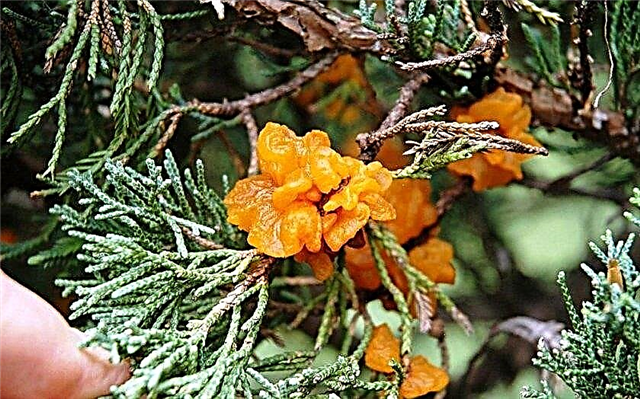
- Biorell cancerthat appears when the bark is damaged. Ulcers appear on the surface, later turning into wounds.
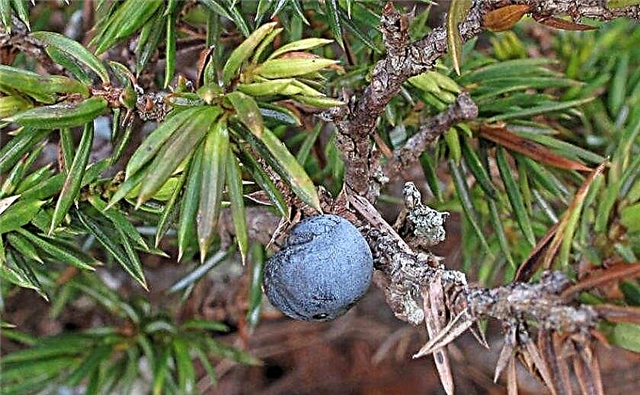
- Schütte - yellowing and shedding of needles. In neglected forms, shute causes the death of the plant.
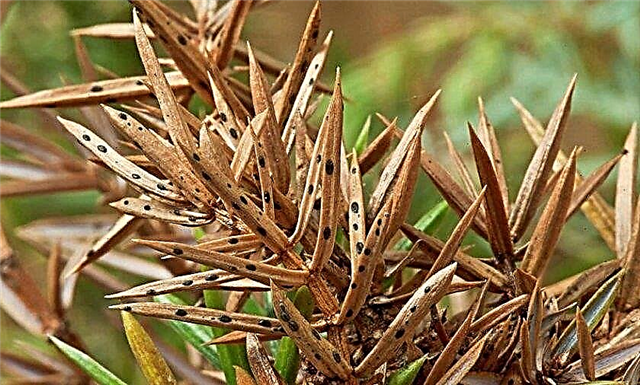
- Alternariosis - the appearance of a black coating on the needles, its further drying.
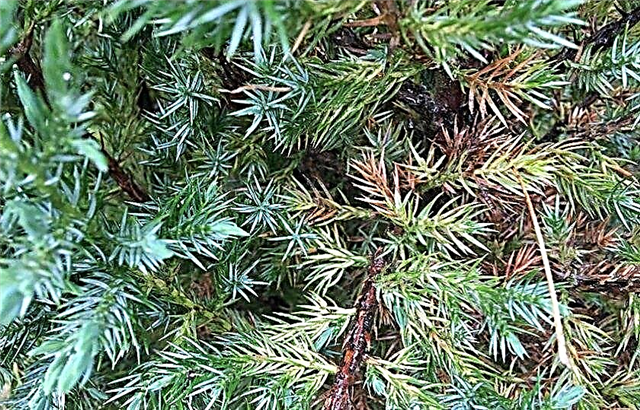
For all of these diseases, prevention is spraying with copper-containing preparations, autumn and spring. Also, for preventive purposes, plants are treated in spring with antifungal drugs (fungicides), a Bordeaux mixture. Necrosis may occur due to excessive soil salinity, heavy watering or lack of moisture. Good care will fix this.
There are such pests of juniper:
Re-treatment with each insecticide is carried out after two weeks. The creeping juniper Nana, with its compact size, lush crown and flexibility for haircut, has earned a leading position in homestead compositions. Unpretentiousness in leaving, frost resistance, lack of plentiful watering, aromatic smell of needles are also pleasant to gardeners.





